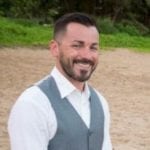Solving humidity problems in the Midwest is more difficult than other, dryer, parts of the country. Controlling humidity comes down to being able to limit the amount of moisture that gets into the building. Use the Moisture Load data as a key metric when choosing an HVAC system for your building. This data is from a study done by ASHRAE which examined peak moisture conditions globally. The goal is to use this data to install a system that keeps relative humidity between 40% and 60%. Anything over 60% and mold can begin to grow more readily. Let’s take a closer look at mold, and then we will discuss how to prevent humidity problems in commercial buildings.
HUMIDITY PROBLEMS IN COMMERCIAL BUILDINGS
Mold can thrive in damp environments that also contain organic material (material that used to be alive). This includes wood studs, drywall paper backing, paneling and a number of other sources. When these areas have a relative humidity above 60% or higher the chances for mold growth increases. As mold consumes these organic materials, it begins shooting mold spores into the air. These spores are what we often associate with a “damp or musty” smell in a space. Not only is this bad for building materials, but it is also the cause of respiratory problems and allergies for tenants. Preventing mold can go a long way in improving indoor air quality and protecting building materials. Important Note: Another common place mold can wreak havoc on are evaporator coils. Ensure your system is getting the maintenance it needs to prevent mold growth and treat it if it is occurring.
A study done by Don Gatley which examined 79 different moisture issues in commercial buildings over a 25-year period. It found that all except 4 were caused by building suction or excess humidity in ventilation and make-up air. These are also some of the most common humidity problems we see when addressing humidity issues with customers.
One of the more popular ways for buildings to deal with high humidity issues is ventilation dehumidification. This is because for most buildings, ventilation and make-up air carry the biggest humidity load. By installing a ventilation dehumidification unit, you can drop the humidity level before the air enters the building. This helps ensure that relative humidity doesn’t spike above 60% even during peak humidity season. When installing one of these units you should also add a return air connection for humidity control during unoccupied hours. By installing a return air connection, you can reduce exterior ventilation during unoccupied hours and still maintain a low relative humidity in your building. The return air connection save you utility costs, because it prevents the unit from running during ideal conditions.[Enjoying this article? Then you may also like: Challenge Yourself To A Guilt Free, Chilly Summer With These 4 Tips]
Severe moisture problems occur when humid outdoor air is pulled through the exterior wall by accidental suction. The suction is usually created by an unsealed return air or exhaust ducts. If you have a packaged air-conditioning unit, you want to make sure it has a good wall seal. When this hot air makes it through the outer wall and makes contact with a cooler surface, condensation occurs. To prevent this, it is important to seal your building’s leaks. You also want to ensure that excess exhaust doesn’t leave the building creating a negative pressure. In most occurrences, a positive room pressure is ideal for preventing suction. There are instances when a positive room is pulling humidity through the outer walls. How is this possible? Poorly sealed exhaust fans or wall mounted AC units will create a negative pressure behind the walls of the room.
If you can’t find a problem within your HVAC System, check for dampness in foundation and walls of your building. Water seeping into buildings through joints in the concrete foundation can often lead to fungal growth if not dealt with correctly. When moisture seeps in, it often comes in contact with organic building materials that allows mold to begin growing.
Reach out to the experts at Rasmussen Mechanical Services and ensure your facility is safe. Call us at 1-800-237-3141, email sales@rasmech.com, chat with a support agent, or contact us online.



